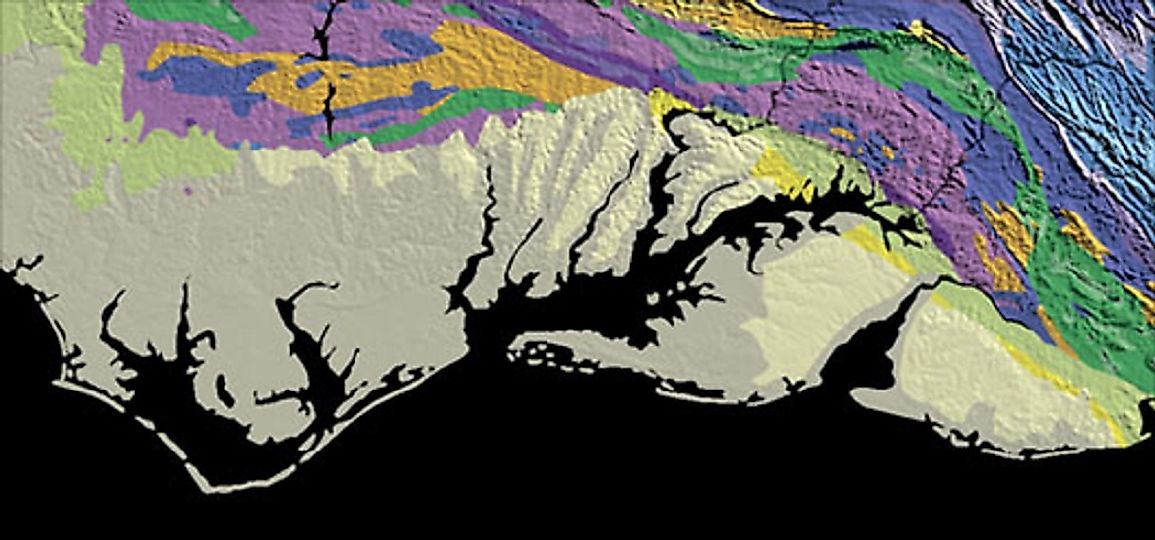What Is A Fall Line, And Where Do They Occur?

Fall Lines Defined
Fall lines typically are themselves an indicator of an area's underlying geology and its topography above ground. A fall line feature identifier would be light-colored soil in flats area with almost no hills, sometimes with the presence of exposed cliffs. Captain Christopher Newport and John Smith were the first Europeans to see this natural phenomenon as they cruised up the rivers in the Jamestown area. A fall line could be situated in a point where a river becomes a waterfall. It could also be a line separating two parallel rivers. Another example would be the point where a waterfall plunges to make possible hydroelectric power generation and waterworks. There is a fall line running from the western Appalachian foothill region that divides it from the eastern Atlantic coastal plains.
What's the Big Deal About Fall Lines Anyway?
Fall lines are very useful in river navigation and hydroelectric power generation. Many sawmills, water mills, and grist mills have been built in fall line areas as means of harnessing water rapids' powers to create energy for these mills to operate with minimal energy costs. Hydroelectric power generation can be seen in such US cities as Columbia in South Carolina, Conowingo in Maryland, Rochester in New York, and along the Susquehanna River. The Atlantic Seaboard Fall Line has about 20 major U.S. cities built along it. The rationale for establishing cities along fall lines was the economic factor of goods and people being transferred from trains, automobiles, buses, and coaches to ferryboats along fall line-situated rivers, and vice versa.
Location, Location, Location
In New England, six major cities are built proximate to fall lines. Also, many U.S. cities founded on fall lines across the United States are connected by U.S. Route 1. Fall lines in the U.S. were the precursor to water locks. During the British colonial days, many towns were established close to fall lines, such as Augusta, Raleigh, Baltimore, Columbia, Philadelphia, and Richmond. Later, the fall line became an invisible line that paralleled the people who lived on the different sides of the income spectrum. The large plantation houses with slaves (whose owners mostly dictated the colonial nation's economy) were in contrast to the small farmers, who were more often than not, situated on the wrong side of the fall line in terms of exploiting this geologic feature's hydrological, mechanical, and transport advantages to better their economic status. The Piedmont Region was where most small farmers lived in early America, and these farmed small parcels of land. Native American raids also created additional conflicts and safety concerns among the small farmers and other settlers in the Piedmont areas. Meanwhile, the large plantations sat much more safely, closer to the Atlantic Coast.
Historical Significance
The significance of the fall line can be better understood during the colonial period when looking at how such differences of residential locations created mob violence over unfair taxation and legislature representation. The rifts created by the fall line caused people to take sides during the Civil War between the North and South. Land ownership and frontier defense were two other issues that created a rift between the wealthy plantation owners and the small farmers. Later, the small farmers joined the side of the British Tories, as opposed to the wealthy plantation owners who were against British taxation. Some of the farmers who were not able to get good tidewater land opted to move westward into the Piedmont. However, disruptions in the peace of the area occurred after the government asked the settlers to pay more taxes to build the governor's palace. There were also the issues of injustices, vague land laws, and corruption that kept the poor whites poor, saw African-Americans remain enslaved, and the wealthy white Americans become even more wealthy.











